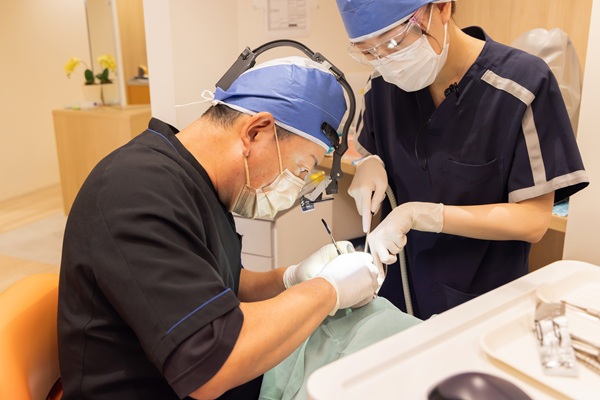What Is Sedation Dentistry?

Those with dental anxiety may be relieved to learn that sedation dentistry is an option for soothing fear while in the dentist chair. Dental anxiety is characterized by an intense fear of dental procedures. Up to 20% of the United States population experiences some form of dental anxiety in their lifetime. This condition can be debilitating and can result in avoidance of the dentist and a sharp decrease in oral health.
What is sedation dentistry?
Sedation dentistry is used on a variety of dental procedures, from simple teeth cleanings to more complex procedures like root canals. Sedation dentistry is when a dentist administers medication to help patients relax while undergoing dental procedures. Often colloquially referred to as sleep dentistry, sedation dentistry usually involves patients being awake yet in a sedated, relaxed state during the procedure.
There are generally four levels of sedation dentistry: minimal sedation (awake yet in a relaxed state), moderate sedation (also known as conscious sedation, patients may slur their words and not remember parts of the procedure), deep sedation (mostly sedated, but can still be awakened) and general anesthesia (completely unconscious).
Types of sedation
Dentists use specific kinds of sedation medication that allow the patient to feel relaxed while in the chair, such as:
- Inhaled minimal sedation
- Oral sedation
- IV moderate sedation
- Deep sedation (general anesthesia)
Minimal sedation
This medication is usually administered in the form of a breathable nitrous oxide (also known as laughing gas) combined with oxygen. A mask is placed over the nose and mouth, connected to a hose where the gas is released. Nitrous oxide is famous in the dentistry community for helping patients relax. Dentists will control the amount of sedation received based on your body mass index and other existing conditions.
Minimal sedation tends to wear off quickly. As a result, this is the only form of sedation dentistry where patients are able to drive themselves home from the procedure (for the most part).
Oral sedation
This is the most common type of sedation dentistry. Oral sedation can range from minimal to moderate, depending on the procedure and level of sedation needed. Minimal sedation with this method requires patients to take a pill orally. The pill, which is usually Halcion (similar to Valium) is taken about one hour prior to any procedure. The dose can be lowered or raised to produce the desired effect.
Patients are still awake, but may feel drowsiness. Some even feel so comfortable they may drift off to sleep during a dental procedure.
IV sedation
This type of moderate sedation is administered through an IV drip, directly into the veins on the arm. IV sedation works more quickly than oral sedation and takes effect in about 30 minutes. IV sedation also allows the dentist to adjust sedation levels throughout the appointment to make sure the patient is comfortable.
Deep sedation
When in a deeply sedated state, the patient can expect to be completely unconscious during a dental procedure. Medication will make patients fall into a deep sleep, with no recollection of the procedure. Those who use deep sedation are not able to be awakened until the general anesthesia wears off.
Nervous at the dentist?
Sedation dentistry can certainly help solve your dental anxiety. If you avoid the dentist despite tooth and gum issues, call our office today. We will make you feel completely comfortable, explaining the entire process and offering sedation dentistry services.
Request an appointment here: https://www.lilburnfamilydentistry.com or call Lilburn Family Dentistry at (770) 800-0178 for an appointment in our Lilburn office.
Check out what others are saying about our services on Yelp: Read our Yelp reviews.
Recent Posts
Oral surgery is sometimes necessary to correct issues that are beyond treatment from basic restorative or preventive care. A general dentist trained in oral surgery can often provide a variety of in-office procedures, offering both convenience and continuity of care. These treatments are performed in a comfortable setting, and they support long-term oral health, improve…
A general dentist steps into the role of a restorative dentist when repairing and replacing damaged or missing teeth. Restorative dentistry is so common that almost everyone has had one of these procedures at some time. Here is a closer look at the role of the restorative dentist and the most common procedures in this…
A good restorative dentist can treat dental chipping right away. This type of dental injury can result from biting hard foods. It can also be due to falls, accidents, fights, and sports injuries. Here are the details on how your restorative dentist can rebuild your chipped teeth.This is a quick way to restore a chipped…
Restorative and cosmetic dentistry are dental disciplines that offer similar services. However, they serve distinct purposes and treatment goals. Understanding the differences between a restorative dentist and a cosmetic dentist can help you make informed decisions about your dental care.Restorative dentistry is a dental specialty that focuses primarily on repairing or replacing damaged or missing…


